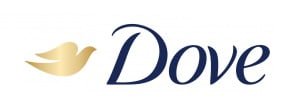This article presents a detailed SWOT Analysis of Dove. SWOT Analysis of Dove focuses on Strength, Weaknesses, Opportunities, and Threats. Strengths and Weaknesses are internal factors and Opportunities and Threats are external factors. SWOT Analysis provides a well-tested management methodology that enables Dove in comparison with competitors and industry to assess its business performance.
Dove is a brand of Hindustan Unilever. Dove is one of the best brands in its segment. Dove has a wide range of products for men and women. Dove products include shampoos, soap, body wash, deodorants, and other products.
The history of Dove is really fascinating. During the Second World War Dove was invented when the soldiers used seawater to bathe. They wanted a soap that was strong with water from the Sea and Dove was excellent. But after the war was over, Dove was worthless, because of daily water it couldn’t be used. It was pretty strong. The R&D applied the cream to the soap to make Dove simple to use with regular water. Now Dove has become very mild soap. It is also known as gentle cleansing soap.

Let’s discuss the SWOT Analysis of Dove.
Strengths in the SWOT Analysis of Dove – Dove SWOT Analysis
- Product Design: Dove’s is a mixture of Soap and Cream this makes Dove both clean and smooth. Therefore, Dove consumers just love the brand. Dove has used this popular product mix in its entire product range.
- Promotions: Dove target all segment of people hence it has a strategy to use normal people for its promotion. Dove does not use celebrity endorsed advertisement for promoting its products. Consumers believe that brand speaks for them and thus choose the brand over others immediately.
- Cost-efficiency: Because the brand does not use celebrities, it saves a lot of money on promises. However it cannot be considered absolute cost savings since the brand promotes more via many outlets at the same time and the publicity budget is very high.
- Distribution channel: The distribution channel is a crucial asset of every HUL brand. But since Dove wishes to carry off a “Premium” look, the delivery chosen by hand makes it much more beneficial. Dove is sold in leading supermarket chains and premium retailers. HUL is targeting both traditional channels and Modern Channels for the sales of Dove Products.
- Profitability: According to statistics Dove is after Knorr and Lipton the third most selling brand in the HUL portfolio.
Weaknesses in the SWOT Analysis of Dove – Dove SWOT Analysis
- Increasing Product Cost: Due to increase in fuel prices transportation and distribution cost is increasing, change in labour cost also impact the pricing of the products.
- Reduced Margins due to Competition: There is a lot of competition in skin care segment hence company has to give discounts and offers this will reduce margin in the product.
Opportunities in the SWOT Analysis of Dove – Dove SWOT Analysis
- Dove can be introduced for Men. Dove is mostly concentrated its business towards Women’s.
- Develop and reinforce the product portfolio-The field of personal care still has the potential to launch new versions or new product lines. HUL’s R&D department is renowned and over the year they have brought many champion products. The same can be said of Dove that if the product range gets static, they can instill new life in the brand cycle.
- The consumer market is growing and the target market is constantly growing due to increasing sales. Where individuals originally would not have dreamed of buying Dove, which is an expensive soap, the rising revenue, and awareness of how healthy skin drives overall well-being is increasingly driving more and more individuals to purchase Dove. And thus the target demand is growing.
- Rural Market Penetration: Rural People are not aware of Soft and Hard Shampoos and Soaps. Thus the company must use an aggressive marketing strategy in rural areas to promote their products.
- Product Range: Expanding the product line as well as adding additional products in the product mix would result in the expansion of the full product mix-something that will also be the goal of HUL.
- E-commerce – Dove has an E-commerce advantage over its competitors. A lot of its products are sold through E-commerce platforms. Due to this, consumers can easily find Dove products online.
Threats in the SWOT Analysis of Dove – Dove SWOT Analysis
- Market saturation-With Neutrogena, Olay, and Nivea independently selling Cream or Soap individually, the market is crowded and there are few items to buy in mind for the luxury target market. For example, a consumer can choose to buy the soap of their choosing and then add Nivea cream instead of buying Dove soap. In order to promote their goods, even Nivea is selling like mad. The penetration of the industry is also apparent.
- Olay Copied Promotional Strategy of Dove: Olay recently copied Dove’s technique, which began using real-life consumers and putting them on the screen to illustrate the effect of their products. If the only thing pushing your own company in the industry is stripped away by the rival brand, so the marketing campaign becomes unsuccessful. So if consumer testimonials are exploited as a messaging mode over a period of time, Dove will have to try alternative ways to get its message out.
- Competition: Competition is a big challenge today to any Personal Care brand so strong that each brand must protect its core strength and tackle the other vulnerabilities. Dove is facing tough competition from Nivea and Olay and other national and international brands.
- Competitors Pricing: Competitors pricing and strategies can be a major threat to the company.
- Government Policies: Government Policies and regulations can directly affect the manufacturing and sales of Dove.

